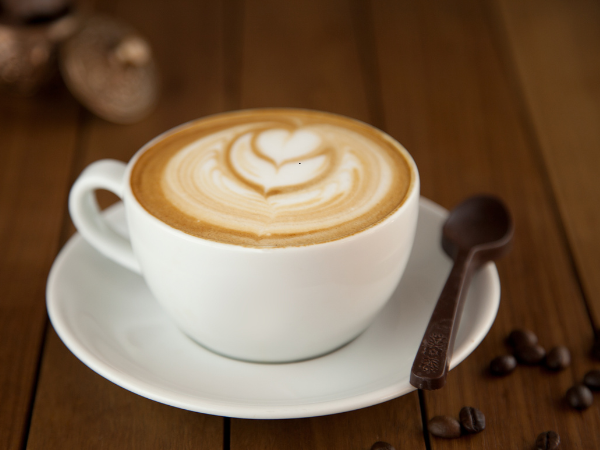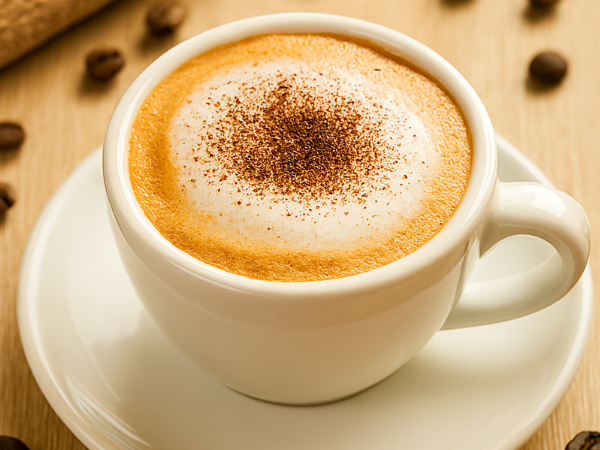The cappuccino is one of the most iconic espresso‑based drinks in the world. Known for its creamy texture, balanced flavor, and signature foam cap, it has become a staple in cafés globally. To truly appreciate this classic, it helps to understand its history, ingredients, and what makes it unique compared to other coffee drinks.
The Origin of the Cappuccino
The cappuccino traces its roots back to Europe, with early versions appearing in Vienna before becoming popularized in Italy. Its name is linked to the Capuchin friars, whose brown robes resembled the color of the drink when espresso was mixed with milk.
Key historical points:
- Originated in 18th‑century Vienna as the “Kapuziner,” a coffee with cream and spices.
- Adopted and refined in Italy in the early 1900s, where espresso machines made the modern version possible.
- The name “cappuccino” comes from the Capuchin monks, referencing the drink’s light brown color.
Today, the cappuccino is a global favorite, enjoyed both in traditional Italian cafés and modern specialty coffee shops.
Traditional Ingredients That Define a Cappuccino
A cappuccino is simple in composition but relies on quality ingredients and precise preparation. Its balance comes from the harmony of espresso, milk, and foam. What makes it special is not just the ingredients themselves, but the way they interact to create a layered drinking experience.
Core ingredients include:
- Espresso – Brewed from freshly ground Arabica or a blend of Arabica and Robusta beans. The choice of beans influences flavor: Arabica brings sweetness and fruitiness, while Robusta adds body and crema. A single or double shot forms the foundation of the drink.
- Steamed Milk – Heated to around 55–65°C (130–150°F), this temperature range is crucial. Too cool and the milk feels thin; too hot and it scalds, losing sweetness.
- Milk Foam – Created by aerating milk with a steam wand until it forms microfoam: tiny, uniform bubbles that feel silky rather than airy. The foam should be thick enough to sit on top but smooth enough to blend with each sip.
Together, these three elements create the cappuccino’s signature structure: bold espresso at the base, creamy milk in the middle, and airy foam on top. The contrast of textures — liquid, velvety, and frothy — is what makes the cappuccino distinct from other espresso drinks.
The Classic Espresso-to-Milk-to-Foam Ratio
What sets a cappuccino apart is its strict ratio, which ensures balance in every sip. Unlike other milk‑based drinks, the cappuccino maintains equal parts of each component. This structure is what gives the drink its signature harmony — no single element dominates, and each layer contributes to the overall experience.
Standard cappuccino ratio:
- 1/3 Espresso – The foundation of the drink, providing bold flavor, crema, and caffeine.
- 1/3 Steamed Milk – Softens the espresso’s intensity, adding natural sweetness and body.
- 1/3 Milk Foam – Creates a velvety cap that locks in heat, enhances aroma, and adds a light, airy texture.
This 1:1:1 ratio is what gives the cappuccino its layered experience — strong yet smooth, rich yet light. Baristas often describe it as the “rule of thirds,” a guideline that ensures consistency across cafés worldwide. While some modern variations lean slightly wetter (more milk) or drier (more foam), the classic balance remains the gold standard.

How Cappuccinos Differ from Lattes and Macchiatos
Cappuccinos are often compared to other espresso drinks, but their structure and flavor set them apart. While they share the same core ingredients — espresso and milk — the proportions, textures, and presentation create very different drinking experiences.
Key differences:
- Cappuccino vs. Latte – A latte typically uses one part espresso to three or four parts steamed milk, topped with only a thin layer of foam. This makes it creamier, milder, and larger in volume (often 8–12 oz), whereas a cappuccino is smaller (around 5–6 oz) with equal parts espresso, milk, and foam.
- Cappuccino vs. Macchiato – A traditional macchiato is essentially an espresso “stained” with just a spoonful of foam or milk. It’s far stronger, more concentrated, and served in a tiny cup, while a cappuccino balances intensity with creaminess.
- Cappuccino vs. Flat White – A flat white, popular in Australia and New Zealand, uses velvety microfoam but in a thinner layer, allowing the espresso to dominate. It’s smoother than a cappuccino but less airy, with a silkier mouthfeel.
- Cappuccino vs. Mocha – Though not always compared, a mocha adds chocolate syrup or cocoa powder to a latte‑style base, making it sweeter and more indulgent than the balanced cappuccino.
These distinctions highlight why the cappuccino is often seen as the middle ground: it offers more strength and structure than a latte, more softness than a macchiato, and more foam than a flat white.
Flavor Profile: What to Expect in Every Sip
The cappuccino’s flavor is defined by balance. The espresso provides intensity, while the milk and foam round out the edges. This harmony creates a layered experience where each sip delivers both richness and lightness.
Typical flavor notes:
- Bold espresso base – Rich, roasted, slightly bitter, with hints of chocolate or nut depending on the beans.
- Creamy sweetness – From the steamed milk, which caramelizes natural sugars and softens the espresso’s edge.
- Light, airy finish – Thanks to the foam cap, which adds a delicate texture and enhances aroma.
- Balanced mouthfeel – The contrast of dense espresso, silky milk, and frothy foam creates a layered sensation.
- Aromatic lift – The foam traps espresso’s fragrant oils, releasing them slowly as you sip.
The result is a drink that’s both robust and approachable, appealing to coffee newcomers and aficionados alike. A cappuccino is never one‑dimensional: the first sip may highlight the espresso’s strength, while the lingering finish leaves a creamy sweetness on the palate.
Popular Variations of the Cappuccino Around the World
While the traditional cappuccino is well‑defined, different cultures have created their own versions.
Common variations include:
- Dry Cappuccino – More foam, less milk; stronger espresso flavor.
- Wet Cappuccino – More milk, less foam; creamier texture.
- Iced or Freddo Cappuccino – Popular in Greece, made with cold frothed milk over espresso.
- Flavored Cappuccinos – Enhanced with cocoa, cinnamon, or flavored syrups.
These variations show how the cappuccino adapts to local tastes while keeping its core identity intact.
Caffeine, Calories, and Other Ingredients
Beyond taste, many people want to know what’s inside their cappuccino nutritionally. The values depend on serving size and milk choice, but averages are well established.
Typical nutrition for a 6‑oz cappuccino with whole milk:
- Caffeine – 60–80 mg (from a single espresso shot).
- Calories – 60–80 kcal.
- Protein – 4 g.
- Fat – 3 g.
- Carbohydrates – 6 g (from milk sugars).
Using skim milk lowers fat and calories, while plant‑based alternatives change the flavor and nutrition profile. Adding sugar or syrups increases calories significantly.
Overall, a cappuccino is a relatively light coffee drink compared to many café beverages, offering a satisfying balance of caffeine and nutrients.

